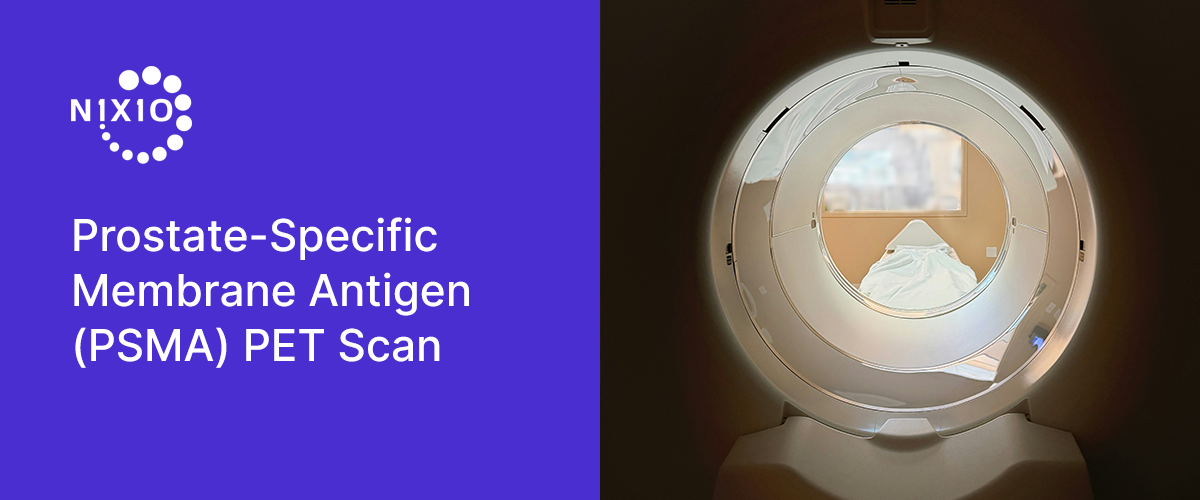Prostate cancer (PCa) is the most common cancer diagnosed in men in the US. For 2024, the American Cancer Society estimates about 299,010 new cases and about 35,250 deaths from it. With the increasing use of prostate-specific antigen (PSA), the majority of men affected by PCa are diagnosed at early stages of the disease. However, delayed diagnosis remains a challenge because of the controversy surrounding the use of PSA as a screening tool, and some men with locally advanced disease inevitably progress to metastatic disease and death.
Accurate staging is the cornerstone for planning in curative-intent surgery or radiotherapy. Conventional imaging including CT, MRI and bone scintigraphy has limited accuracy for detection of metastatic lesions, particularly pelvic nodes. Current guidelines recommend the use of multiparametric magnetic resonance imaging (mMRI) to assist with diagnosis and locoregional staging of prostate cancer before radical prostatectomy.
Prostate specific membrane antigen (PSMA) is a transmembrane cell surface receptor overexpressed up to 1000 times on PCa compared to normal prostate cells. PSMA is not only selective to prostate cancer cells but also expressed by neovascular endothelial cells of various cancers, including glioblastoma, kidney cancer, lung cancer, and breast cancer. To date, however, most clinical research on PSMA focuses on prostate cancer due to its exceptional high level of PSMA expression by tumor cells.
Researchers at the University of Alberta, Edmonton, Alberta, Canada, recently reported the results of a phase 2 study that compared a PET/CT using Fluorine-18 PSMA-1007, a PSMA radioligand with high PSMA affinity against a mMRI for the locoregional staging of prostate cancer. All participants underwent both 18F-PSMA-1007 PET/CT and mMRI within 2 weeks of one another and before radical prostatectomy. PSMA PET was 20% more accurate than mMRI in decerning unilateral vs bilateral disease; it also outperformed mMRI in detecting extracapsular extension, its presence may alter the decision to perform nerve-sparing techniques on the side with anticipated tumor extension and the extent of margin that is sought during pericapsular dissection.
Based on their findings and those previously published for metastatic staging, the authors believe the adoption of a single preoperative PSMA PET scan may potentially replace the trio of preoperative conventional imaging tests currently ordered (mMRI, CT abdomen and pelvis, and bone scan) in certain patients with intermediate-risk and high-risk prostate cancer.
There are, however, some limitations to consider. There is a small chance of a missed diagnosis because a small percentage of prostate cancers do not express PSMA and cannot be detected by a PSMA PET scan. Sometimes, PSMA is expressed by other types of cancer and by noncancer-related conditions, which may be incorrectly diagnosed as prostate cancer. Though rare, a missed diagnosis or an incorrect diagnosis can lead to an inappropriate treatment.
At this time, a PSMA PET scan should be considered for the following situations:
- To rule out metastases in patients with prostate cancer that is potentially curable by surgery or radiotherapy.
- To detect recurrent prostate cancer in patients who already received surgery or radiotherapy but now have a rising prostate-specific antigen level. Results of a PSMA PET scan may help physicians and patients decide between radiotherapy and systemic therapy.
- To determine eligibility for lutetium Lu-177 vipivotide tetraxetan (Lu-177 PSMA), a radiopharmaceutical treatment that targets PSMA-expressing prostate cancer. This treatment can be used in patients with prostate cancer that has progressed during treatment with chemotherapy and novel oral hormone treatments. Treatment with Lu-177 PSMA is most effective in patients whose prostate cancer has a high level of PSMA expression on a PSMA PET scan. If a PSMA PET scan shows that a patient’s prostate cancer expresses little to no PSMA, Lu-177 PSMA is usually not helpful.


